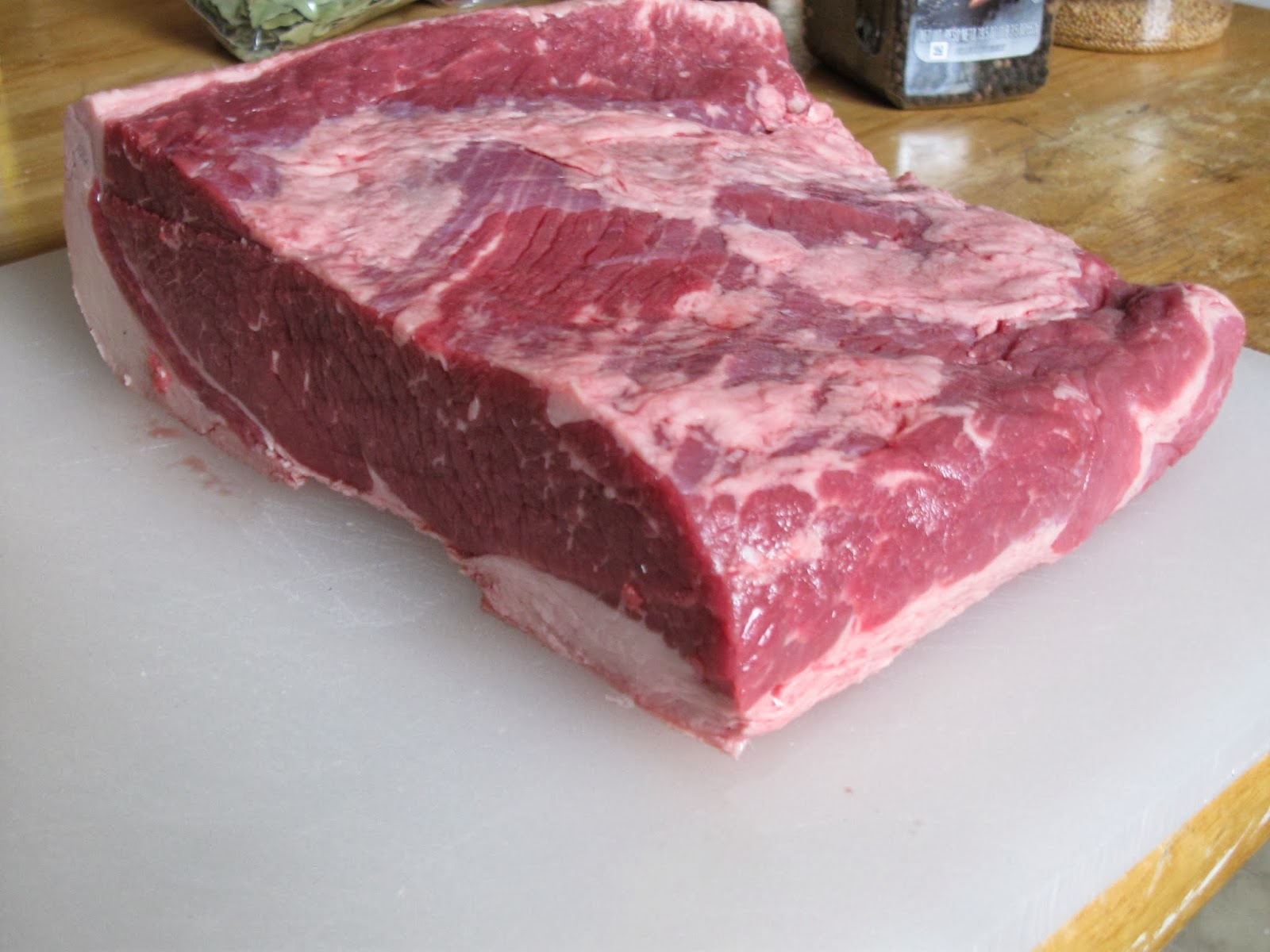A very important Holiday is a
approaching. You might not realized it, but St. Patrick's Day is just
around the corner. I must have that Traditional St Paddy's day meal
Corned Beef and cabbage. That slow cooked pink meat that feeds the
soul of my Irish heritage. That meal I seem to wait all year for. All
I need to do is head to the store and pick out the best looking
plastic bag with those pickling spices and I'm good to go...... What
was that...Did I hear someone say something? A Year of Making
EVERYTHING, you say? No, no, no this is a cured meat that doesn't
count, remember. Hey where are you going?
Come on, We're talking
about my favorite holiday apart from National IPA day. I get a pass
for that right?.............Not speaking to me? Damn you're good. You
must be Catholic too, because you understand guilt REALLY well. Okay,
I give, I'll make my own Corned Beef, Satisfied? But if I have to,
you have to do it too or share this post with someone else, DEAL?
So how did corned beef become the meal
of St Patrick's day? Well one day a priest, a rabbi and an Irishman
walked into a Jewish Delicatessen. No, Really! Seems that this Irish
tradition that we all know and love is an American invention. See in
Ireland a traditional meal would have been smoked pork and potatoes,
but when the Irish immigrated to America pork was prohibitively
expensive. Seems that pork was actually rich people food. You've
heard the expression “Eating High on the hog”? Well that
expression meant that the richer you were the more likely you were to
be able to afford the better cuts of pork that were normally located
higher on the animal. Looking for a substitute the Irish did what all
immigrants to this country have done and looked to the cultures
around them. They had Jewish neighbors that had been koshering and
corning beef for years. It was convenient and relatively
inexpensive,and so was born the Celtic/Hebrew fusion dish that we
know of as corned beef and cabbage. Okay even I'm bored of the
Corned Beef history lesson.
Corned
Beef
Adapted from an Alton Brown Recipe
Ingredients
2 quarts water
1 cup Tender Quick
1/2 cup brown sugar
1 cinnamon stick, broken into several pieces
1 teaspoon mustard seeds
1 teaspoon black peppercorns
8 whole cloves
8 whole allspice berries
12 whole juniper berries
2 bay leaves, crumbled
1/2 teaspoon ground ginger
2 pounds ice
1 (4 to 5 pound) beef brisket, trimmed
Directions
Place the water into a large 6 to 8 quart stockpot along with Tender Quick, sugar, cinnamon stick, mustard seeds, peppercorns, cloves, allspice, juniper berries, bay leaves and ginger. Cook over high heat until the salt and sugar have dissolved. Remove from the heat and add the ice. Stir until the ice has melted. If necessary, place the brine into the refrigerator until it reaches a temperature of 45 degrees F. Once it has cooled, place the brisket in a 2-gallon zip top bag and add the brine. Seal and lay flat inside a container, cover and place in the refrigerator for 10 days. Check daily to make sure the beef is completely submerged and stir the brine.
Adapted from an Alton Brown Recipe
Ingredients
2 quarts water
1 cup Tender Quick
1/2 cup brown sugar
1 cinnamon stick, broken into several pieces
1 teaspoon mustard seeds
1 teaspoon black peppercorns
8 whole cloves
8 whole allspice berries
12 whole juniper berries
2 bay leaves, crumbled
1/2 teaspoon ground ginger
2 pounds ice
1 (4 to 5 pound) beef brisket, trimmed
Directions
Place the water into a large 6 to 8 quart stockpot along with Tender Quick, sugar, cinnamon stick, mustard seeds, peppercorns, cloves, allspice, juniper berries, bay leaves and ginger. Cook over high heat until the salt and sugar have dissolved. Remove from the heat and add the ice. Stir until the ice has melted. If necessary, place the brine into the refrigerator until it reaches a temperature of 45 degrees F. Once it has cooled, place the brisket in a 2-gallon zip top bag and add the brine. Seal and lay flat inside a container, cover and place in the refrigerator for 10 days. Check daily to make sure the beef is completely submerged and stir the brine.







Must let us know how the corn beef turn out!!!
ReplyDeleteAbsolutely, Thanks for posting. I just got the follow up posted this morning. .
Delete